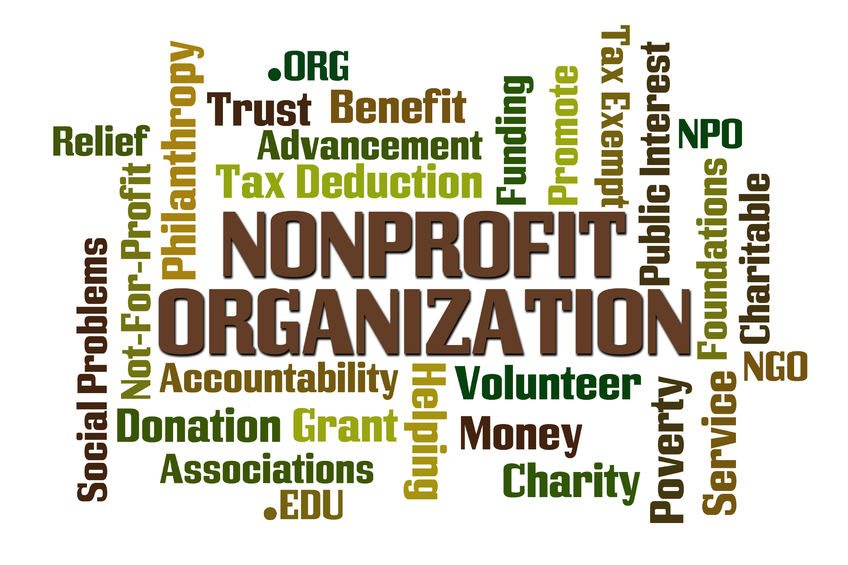Just How a Nonprofit Firm Can Aid You Optimize Your Company's Reach
Just How a Nonprofit Firm Can Aid You Optimize Your Company's Reach
Blog Article
Checking Out the Diverse Features and Duties of a Nonprofit Agency in Addressing Social Issues and Encouraging Modification
Not-for-profit firms serve as critical agents of adjustment within culture, taking on a myriad of social issues with diverse strategies. Their duties prolong past plain service arrangement; they participate in advocacy, resource mobilization, and neighborhood outreach, commonly serving as a bridge between essential services and marginalized populations. By fostering cooperations and using culturally relevant approaches, these companies resolve the origin of social challenges. Yet, the complexities of their duties elevate important concerns about effectiveness and sustainability. What are the ramifications of these varied features on lasting area effect?
Comprehending Nonprofit Company Roles
The effectiveness of not-for-profit firms hinges on a clear understanding of their diverse duties within society. Not-for-profit firms typically operate as solution companies, supplying vital programs and resources to underserved populaces.
In addition, nonprofits play an essential duty in campaigning for, increasing understanding and affecting policy decisions that affect their areas. By involving in research study and public education and learning, these organizations help form public discourse and advertise notified decision-making - nonprofit agency. They likewise serve as platforms for volunteerism, mobilizing area members to add their time and abilities towards cumulative goals
Moreover, not-for-profit companies typically act as conveners, combining diverse stakeholders to foster partnership and collective influence. This collaborative strategy boosts their capacity to resolve complicated social issues efficiently. Recognizing these diverse duties is crucial for optimizing the possibility of nonprofit firms in developing lasting social change and enhancing general neighborhood health.
Community Interaction and Outreach
Efficient neighborhood engagement and outreach are basic elements of not-for-profit firms' methods to build and promote connections trust within the communities they offer. These initiatives concentrate on comprehending community demands, promoting awareness of available sources, and motivating involvement in programs created to resolve social issues. Not-for-profit companies use a range of methods to engage with neighborhood participants, such as workshops, educational sessions, and collaborative events.
Outreach campaigns offer to strengthen partnerships with varied populations, especially marginalized groups that might encounter barriers to gain access to. By utilizing culturally relevant interaction techniques and leveraging neighborhood collaborations, nonprofits can enhance their exposure and show their dedication to neighborhood empowerment. This technique not just grows a sense of belonging however also boosts the likelihood of sustained interaction.
Moreover, effective area involvement goes past mere engagement; it involves proactively paying attention to neighborhood participants' comments and incorporating their insights into program growth. This joint procedure makes sure that the solutions provided are receptive, relevant, and customized to the one-of-a-kind difficulties encountered by the neighborhood. Inevitably, cultivating solid connections with engagement and outreach can cause even more impactful interventions and a better collective effort toward advertising positive social modification.
Campaigning For and Plan Impact
Advocacy serves as a vital mechanism for not-for-profit companies to influence public policy and drive systemic change. By leveraging their expertise and neighborhood insights, these companies can effectively represent marginalized populaces and address pushing social problems. Nonprofits involve in campaigning for through numerous methods, including public recognition campaigns, grassroots mobilization, union structure, and direct lobbying of policymakers.
Through these initiatives, not-for-profit firms intend to form regulation and policy frameworks that align with their objective and the requirements of the neighborhoods they offer. They perform research study, collect data, and share compelling narratives to highlight the necessity of specific problems, ensuring that decision-makers are educated and encouraged to act. This process not just enhances the voices of those influenced by social oppressions yet also promotes a much more fair and comprehensive policymaking setting.
In addition, campaigning for initiatives usually look for to develop lasting architectural modifications, resolving source instead of just minimizing signs and symptoms. By focusing on plan impact, not-for-profit firms add to a broader understanding of social obstacles and promote remedies that can bring about lasting improvements in social health. Ultimately, advocacy is essential to the transformative function nonprofits play in developing a just and try this site fair culture.
Fundraising and Resource Management
Not-for-profit companies depend on durable fundraising and source administration approaches to support their campaigning for efforts and maintain their missions. Effective fundraising is crucial for guaranteeing the accessibility of funds required to implement programs and activities that resolve pushing social problems. This procedure usually includes branching out income streams with grants, individual contributions, company sponsorships, and fundraising events. By using a multi-faceted strategy, nonprofits can minimize the risks related to dependence on a solitary financing resource.
Resource management is just as critical, as it involves the tactical allocation of both human and economic sources to make the most of impact. Nonprofits have to create budget plans that line up with their goals while ensuring openness and liability to stakeholders. This involves routine surveillance of expenditures and readjusting methods as required to maximize source use.

Collaboration and Partnerships
While lots of organizations pursue their objectives separately, cooperation and collaborations can dramatically enhance the efficiency of nonprofit agencies. By interacting with other nonprofits, government entities, and exclusive sector organizations, nonprofits can pool resources, share experience, and magnify their influence on social concerns. Joint efforts usually lead to innovative options that may not be possible separately, leveraging the strengths of each companion to attend to complex challenges.

Ultimately, efficient cooperation requires clear communication, shared goals, and common respect amongst partners. By accepting a participating method, not-for-profit agencies can create sustainable networks that not only address prompt social concerns but visit our website also add to lasting systemic modification, fostering a more fair culture. Through cooperation, nonprofits can flourish and maximize their capacity for significant impact.
Conclusion
Not-for-profit agencies act as vital entities in resolving social issues and cultivating change within communities. With varied Your Domain Name functions such as neighborhood source, campaigning for, and involvement management, these companies successfully set in motion resources and support for underserved populaces. Their joint initiatives with different stakeholders enhance the capability to affect public plan and advertise architectural changes. Eventually, the diverse duties of not-for-profit agencies substantially add to the quest of social justice and the enhancement of community wellness.
Understanding these diverse duties is vital for maximizing the possibility of nonprofit firms in creating lasting social modification and improving overall neighborhood health.
Reliable area engagement and outreach are essential components of not-for-profit firms' techniques to construct and cultivate connections depend on within the areas they serve. By functioning with each other with various other nonprofits, government entities, and private field companies, nonprofits can pool sources, share experience, and magnify their effect on social problems.Nonprofit companies serve as essential entities in fostering and dealing with social concerns adjustment within neighborhoods - nonprofit agency. Eventually, the diverse duties of nonprofit firms dramatically add to the search of social justice and the renovation of area health
Report this page